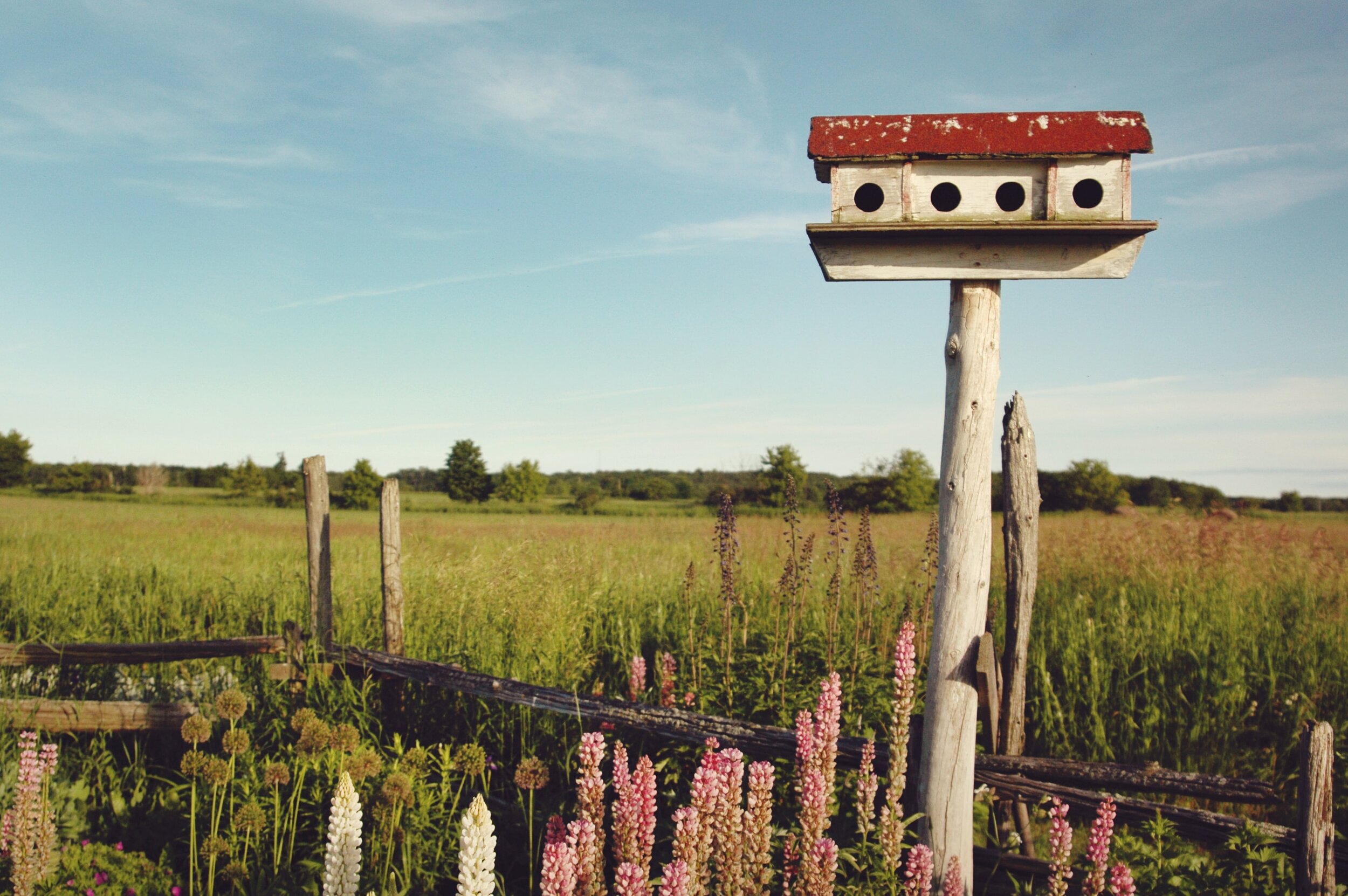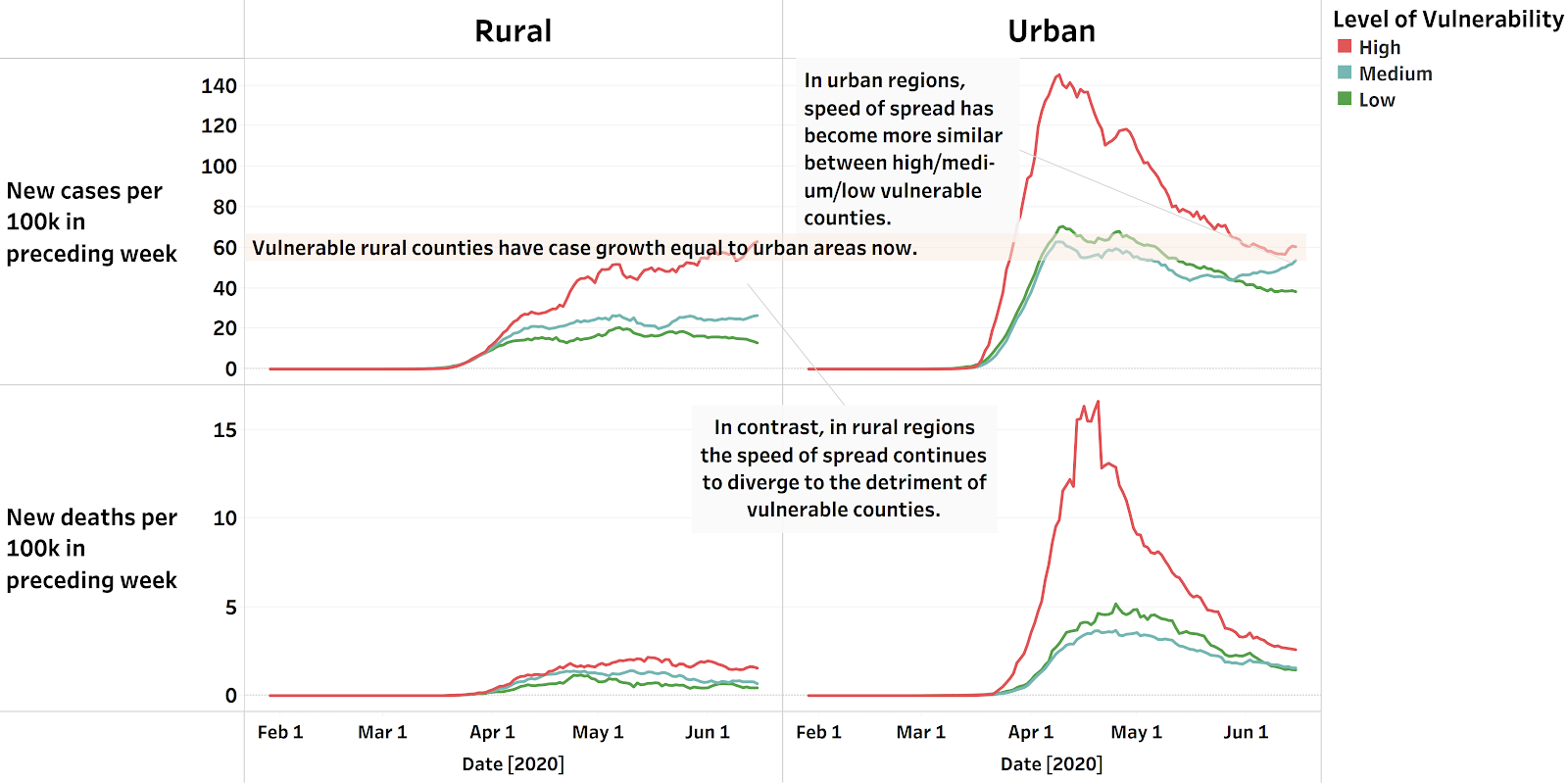By leveraging external data sources and its own COVID-19 Community Vulnerability Index (CCVI), Surgo Foundation today released its first state-wide COVID-19 analysis: a deep dive into the state of Arizona to assess whether there are relationships between Arizona’s most vulnerable communities and community COVID-19 case growth, access to testing sites, and social distancing behaviors over the last seven week period.
The analysis found that “highly vulnerable” communities in Arizona's Native American and border regions—identified as such months before the pandemic hit its current peak—have indeed seen significantly higher viral spread over the past five weeks. These areas also suffer from weaker healthcare infrastructure and sub-optimal housing, which makes them more vulnerable to other negative consequences of a COVID outbreak, such as increased financial hardship or secondary health effects.
The analysis also showed that Arizona Governor Ducey’s recent policy decisions regarding letting the stay-at-home order expire may have disproportionately harmed the most vulnerable communities in the state, leading now to a 40% disparity in case rates between primarily Native American and Hispanic populations and other Arizonans.
“Our analysis strongly suggests that Arizona’s premature re-openings worsened racial disparities in the state, with Native Americans feeling the brunt,” said Dr. Sema Sgaier, executive director of Surgo Foundation. “Our goal in sharing this state-wide analysis is to show other states how they can use the index to get ahead of the virus rather than be overwhelmed by it after it is too late. We hope other states can learn from Arizona’s example.”
Other key findings of the Arizona analysis include:
Native Americans and other vulnerable populations are bearing the brunt of the spike following the stay-at-home order lifting, with 40% higher case rates than the rest of the state. Counties identified as highly vulnerable in early March - including Apache, Navajo, and Santa Cruz counties - have been disproportionately hit by the surging case growth in the weeks following May’s stay-at-home order lifting. As of July 1, these counties have rates that are 40% higher than the rest of the state - and 400% higher than their own infection rates at the beginning of June.
Testing deserts in Arizona compound the challenges for vulnerable communities. People in these vulnerable communities are required to travel up to twice as far to access a COVID-19 test site than people in less vulnerable areas. In urban Arizona, 2 million residents of highly vulnerable areas are required to travel 2.4x as far (7 miles on average, versus 3) to access a test site; and vulnerable rural Arizonans must travel 19 miles, on average, compared to less than 10 for non-vulnerable rural Arizonans.
The racial disparities are growing as Latinos in vulnerable border communities join Native Americans in vulnerable counties with the highest infection rates in the state. Border counties are driving the recent rapid per-capita case growth in Arizona, joining the already hard-hit Native American communities. These counties, like Yuma and Santa Cruz in particular, are also vulnerable in terms of socioeconomic factors and their high proportions of minority populations, especially Latino populations.
With social distancing lower than it was pre-pandemic, a growing threat in Coconina and La Paz Counties looms as case rates spike. Dramatic drops in social distancing in inland counties Coconina and La Paz may point toward the newest threat of rising per-capita case growth. While on average, Arizona maintained social distancing, with levels of mobility 16% below average in the last week of June, Coconina and La Paz actually increased mobility by 23% and 44%, respectively, over pre-pandemic levels. At the same time, these counties’ per capita case counts are skyrocketing, on their way to join the hardest-hit counties in the state.
The COVID Community Vulnerability Index is featured as a CDC resource for federal, state, and local planners and responders. It ranks communities on a scale of 0 to 1—where 0 is the least vulnerable and 1 is the most vulnerable. It measures six kinds of vulnerability: minority status and languages spoken; socioeconomic status; household composition and disability; access to transportation and housing; epidemiological factors; and health system factors.
Technical Notes:
Data updated as of July 1. Case and death data are from the JHU Github repository, which tracks daily confirmed cases from February 24 onwards. Testing location data was compiled from GISCorps a testing repository maintained through validated, crowdsourced data. Social distancing analyses are based on mobile data from Unacast’s Data for Good Initiative. For an updated version of these stats, contact Bethany Hardy at 202-277-3848.
About Surgo Foundation
Surgo Foundation, based in Washington, D.C., is a nonprofit organization dedicated to solving health and social problems with precision. We do this by bringing together all the tools available from behavioral science, data science, and artificial intelligence to unlock solutions that will improve and save lives. We work in the United States and in low-income countries on issues like COVID-19, HIV/AIDS, tuberculosis, maternal mortality, health care, housing, and more. Visit us at surgofoundation.org.
About the COVID-19 Community Vulnerability Index (CCVI)
Surgo Foundation developed the COVID-19 Community Vulnerability Index (CCVI) to help federal, state, and local leaders target vulnerable communities with more informed and effective interventions. This index—completely open access, and featured as a resource on the CDC’s website—ranks U.S. communities in terms of their vulnerability to COVID-19 based on six key factors: socioeconomic status; household composition and disability; minority status and language spoken; access to housing and transportation; epidemiologic factors; and healthcare system factors. The index also provides community-level data COVID-19 cases and mortality, as well as how much social distancing is happening within a community.
Contact: Bethany Hardy at Surgo Foundation at bethanyhardy@surgofoundation.org or (202) 277-3848.






